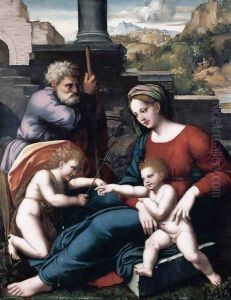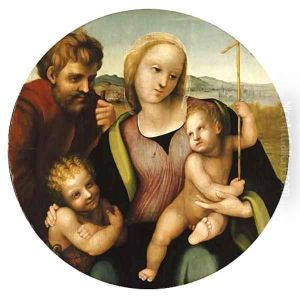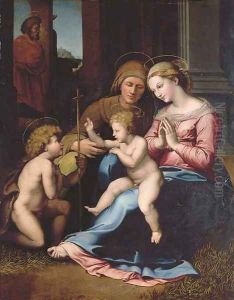Leonardo Da Pistoia Paintings
Leonardo Grazia, known as Leonardo da Pistoia or Leonardo Grazia da Pistoia, was an Italian painter born in 1483. His exact date of death remains uncertain, with little documentation to confirm details of his later life. Leonardo da Pistoia was a notable figure during the High Renaissance, a period characterized by significant achievements in art, science, and culture, primarily within Italy. Despite his nickname suggesting a connection to Pistoia, a city in Tuscany, most of his documented work and activities took place in Rome, indicating that he may have spent a significant portion of his career there.
Leonardo da Pistoia's artistic contributions are often overshadowed by the colossal figures of his time, such as Leonardo da Vinci, Michelangelo, and Raphael. However, his work provides valuable insights into the stylistic transitions and cultural influences of the late 15th and early 16th centuries. He was known for his religious compositions, which were typical of the era, blending traditional Christian iconography with the emerging Renaissance emphasis on humanism and naturalism.
One of his most significant associations was with Raphael, one of the Renaissance's most illustrious masters. Leonardo da Pistoia is believed to have been involved in the execution of some of Raphael's designs, indicating a level of skill and respect that placed him within the inner circles of Renaissance artistry. This connection not only highlights Leonardo da Pistoia's technical abilities but also suggests his contributions to some of the period's larger artistic projects.
Despite the scarcity of surviving works definitively attributed to him, Leonardo da Pistoia's legacy lies in his participation in the vibrant cultural and artistic exchanges of his time. His work reflects the ongoing evolution of Renaissance art, embodying the period's ideals and its continuous quest for beauty and knowledge. While the details of his life and career may be sparse, the impact of artists like Leonardo da Pistoia helped to shape the Renaissance's artistic landscape, contributing to the foundation upon which later generations of artists would build.


